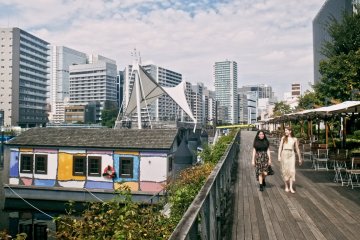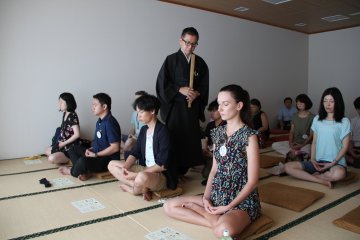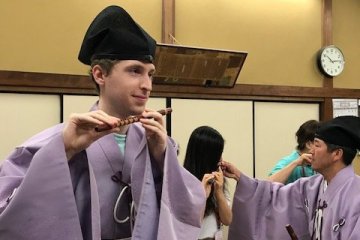Shinagawa is one of Tokyo’s largest hubs and has a history deeply rooted in culture. During the Edo period, Shinagawa was the first of over fifty stations of the Tokaido, a route that travelers would take from Tokyo to Kyoto. In addition to maintaining itself as a transportation hub with shinkansen and airport access, Shinagawa has established itself as a center for traditional Japanese cultural experiences.
This year Shinagawa collaborated with numerous local partners and tourist associations (including Japan Travel) to create and host the very first “Shinagawa Culture Event”. Local culture experts, artists, masters and volunteers welcomed people from all over the world to an event with activities as diverse as the participants nationalities.
The Shinagawa Culture Event had four different cultural experiences hosted twice each throughout the morning and afternoon.
Course 1
Course 1 focused on Gagaku performances, Zazen meditation, and a Koto instrumental performance with snacks.Activities included the following:
Gagaku Performance
We started out the walking course by viewing a traditional Gagaku musical performance. Gagaku (literally elegant music) is an extremely traditional and ancient imperial court music and dance that originated hundreds of years ago in the Kyoto imperial court. The music is traditionally based on Shinto and most often performed at shrines. The colors of the costumes were quite unique and bright and the band consisted of several instruments unique to Japan. Though there are too many instruments to mention a few of the major ones include wind (Shakuhachi, Komabue, Hichiriki), string (Biwa, Koto) and percussion (Shoko, Daiko, Hokyo).
Zazen Meditation
Zazen is Japanese zen meditation with the purpose of removing all thoughts from the mind to control interference from the outside world. Our instructor taught us to maintain a stable, physical posture and mental calmness to achieve peace and have self-discovery on a deeper level. Zazen can be difficult as the postures require the body to stretch in new and interesting ways. We had a few sessions, each 10 minutes duration. During the 1st attempt I had trouble concentrating and became restless after a few minutes. For the 2nd session, the Zazen master offered to tap you with a stick to increase your concentration if you request for it. I tried it out and was surprised as the session went much better and my posture improved quickly. I was able to hold myself properly for the whole session. Zazen helped me to relax and lose much of the tension I had not really realized was there. The experience was enlightening and could certainly help me to develop more healthy and positive habits for the body and mind.
Koto Performance
The final destination placed us at the Kamishinmeitenso Shrine to attend a koto performance. The performance was held in an open hall building next to the main shrine building with tatami flooring. Koto is a Traditional 13 string instrument made of a very long piece of kiri wood and played using 3 finger picks where small wooden blocks are used for tuning. The tuning is carefully reset for each performance in a graceful manner. I was in awe throughout the whole performance. The performer was completely immersed in her songs and her flair and elegance in strumming was through the roof.
As we sat down on cushions during the performance, we were served a wagashi sweet dessert and tea. The wagashi was made from azuki beans into a rectangular hard jelly dessert wrapped with leaves. It is evident that delicate craftsmanship and design has been placed into each wagashi, showing the pride of the creator and their attention to details.
The activities were hosted on the traditional streets of Shinagawa. The central gathering point was the Kamishinmeitenso Shrine where several events were hosted both within the shrine and in neighboring buildings. Shinagawa’s local mascot Cinnamoroll, (https://www.sanrio.co.jp/character/cinnamon/) a Sanrio character, was also there to make an appearance to welcome the group and play with the kids.
The Shinagawa Culture Event provided tourists, foreign residents, and even local Japanese an opportunity to see and partake in traditional activities and performances. These exclusive experiences (many performed for the first time in Shinagawa) may soon be available to all so be on the lookout for culture events and activities via Shinagawa and Japan Travel.








